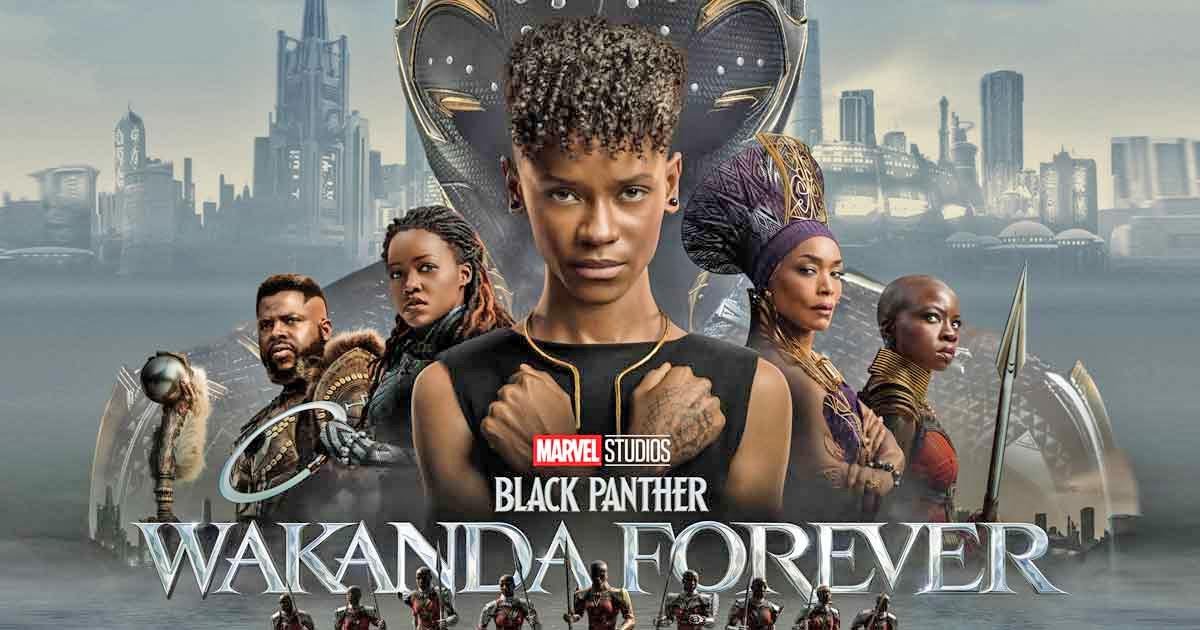Black Panther: Wakanda Forever Review
Wakanda Forever fails to live up to its predecessor despite its grandiose and intimate filmmaking.
With the original Black Panther not only being one of Marvel’s most successful projects at the time but a bonafide cultural phenomenon, Ryan Coogler had his hands full when creating the sequel. This pressure amplified ten fold after the tragic passing of Chadwick Boseman, or as many knew him, King T’challa. Walking into Black Panther: Wakanda Forever, I was interested to see how the film would handle Boseman’s passing, as well as if this would actually be a quality Marvel film. With the recent catalog of Marvel products being less than stellar, Wakanda Forever promised a return to a golden period for the MCU, and I was desperate to return.
The movie begins by addressing what everyone in the audience is wondering: “What happened to King T’challa?” From there, the viewer is brought on a geo-political journey over the world's minimal reserves of Vibranium. Queen Ramonda continues to fight for her nation’s protection through isolation, claiming she is not protecting her vibranium from the world, but protecting the world from humanity’s inevitable deadly use of vibranium. An interesting moral argument, one that establishes themes of imperialism that are rarely explored with any further nuance. In fact, it seems as though the thematic discussions that rendered the first film so impactful have been flattened in the sequel, imbuing the film with a hollowness sadly consistent with Marvel’s latest content. There are only a few scenes between our protagonist, Shuri, sister to T’Challa and princess of Wakanda, and Namor, the king of the underwater city of Talokan, discussing the ramifications of starting a war with as many layers as the one proposed. Similarly, Namor’s motivations are explained through flashbacks of slavery and violence the surface dwellers impose on themselves. Again, an interesting thematic argument executed with the depth of a kiddy pool instead of the Atlantic.
The cast rounds out with an overwhelming amount of characters, some suffering as a result of the bloated story. Riri Williams, the future protagonist of Armor Wars and Shuri’s M.I.T. attending genius companion, is left to be little more than a plot device without any meaningful story of her own. Queen Ramonda is an empowering presence, but I struggled to connect with Okoye, Nakia and M’baku, as they all felt subject to a plot without the space and time to make them feel alive.
Tragically, the character I felt the most disappointed with was the protagonist. However, this is a result of the web that is narrative, plot, theme and character. While the movie begins with inklings of thematic statements by establishing concepts such as tradition versus modernity, the legacy of the Black Panther, upholding one's responsibility and contemporary imperialism, as previously stated, very few of these themes are organically woven into the story or character arcs. Instead of grappling with the bone crushing pressure of becoming the next Black Panther, Shuri’s arc is reduced to the message “vengeance is bad,” a thematic argument that seems shoehorned into the last act once the writers realized there was fifty minutes left of the film.
While narratively this is typical of most phase 4 projects, what is noticeably different in Wakanda Forever is its tone and aesthetics, as this isn’t just a marvel movie, but a Ryan Coogler film. With a handheld camera that immediately grabs the attention of the audience and leaks of sun rays highlighting the gorgeous production design, Wakanda Forever is, for the most part, one of Marvel’s better looking products with visuals that accurately match its narrative. However, it wouldn’t be a phase 4 film without inconsistencies, as Coogler’s style is at times jarring and shockingly barebones. Some scenes play out with very few cuts, and without any creative angles or blocking, it allows the viewer to bask in the uninteresting drama on display. When the scenes are cut, the film opts to implement forms of discontinuity editing, with the film cutting from Riri entering a vehicle to her inspecting the hood and audio bridges stitching them together. This is one of countless examples of an editing style that, when done well, amplifies the grounded and human ambience this film creates. However, the cutting proves to be just as jarring and seemingly unprofessional in the wrong contexts. Furthermore, this is a detriment to the film’s already messy pacing, as on a macro-scale the thematically dissonant story moves at a snail’s pace due to a lack of character development and thematic cohesion, but on a micro level cuts scenes at what feels like a few seconds too soon, managing to result in a product that simultaneously moves too quickly and too slow.
However, these narrative and aesthetic pitfalls never failed to make me enjoy being in the world of a quality MCU product. The opening minutes filled me with an excitement I didn’t expect, especially after being conditioned to the company's recent monotony. All it took was a subtitle changing languages to give me a giddy that was sadly whittled down throughout the film’s runtime. There is certainly a potential here, as much a potential for a thematically resonant product as there is for a franchise in the making. Sadly, while these two options aren’t inherently mutually exclusive, I foresee a future where Marvel makes it so and chooses the ladder.
